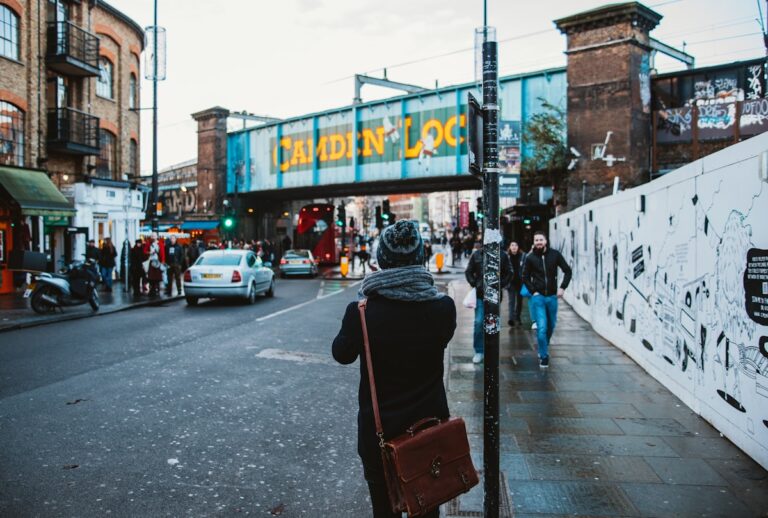Getting Around Rome: Best Way to Travel in Rome
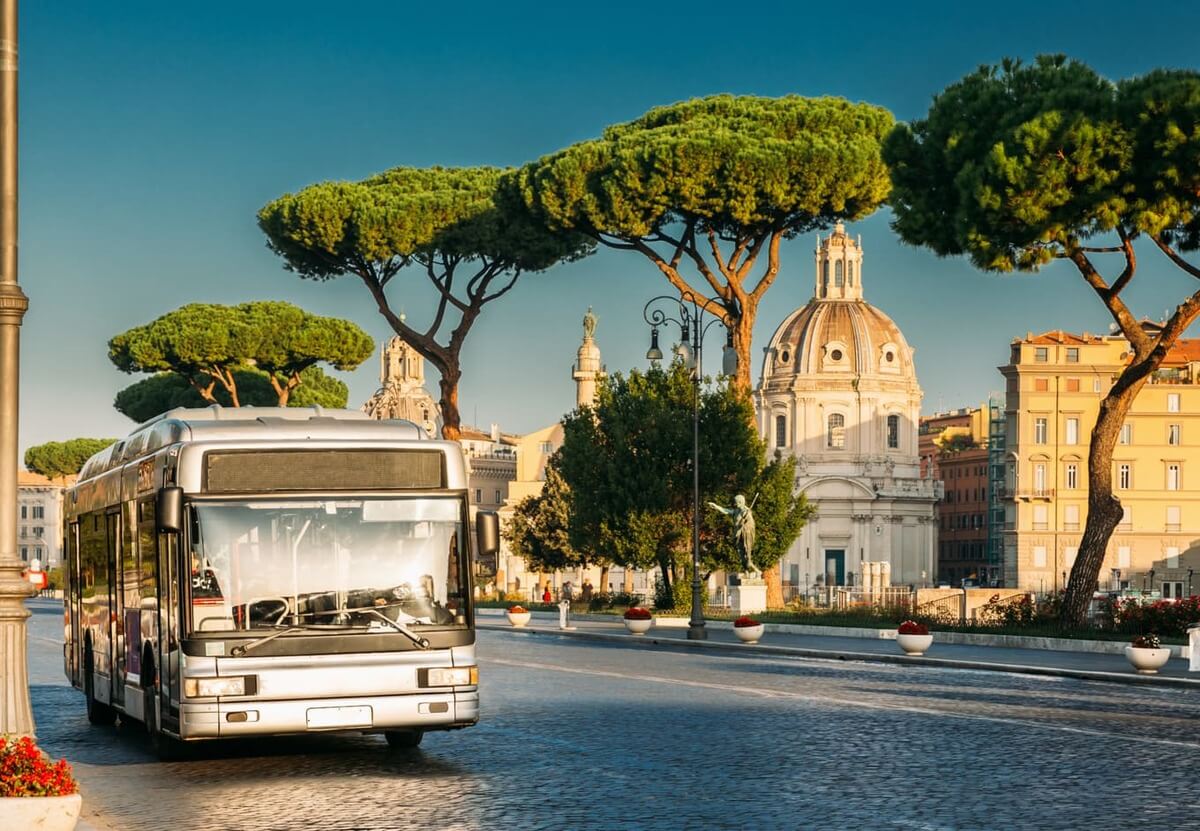
Rome offers multiple efficient transportation options for exploring the city. The metro system’s three lines connect major attractions, while an extensive bus network reaches areas beyond metro coverage.
- Understanding Transportation in Rome: What to Expect
- Choosing the Best Way to Travel Around Rome Based on Your Itinerary
- Comparing Rome Public Transportation and Other Travel Options
- How Walkable Is Rome for Tourists?
- Best Areas to Explore Without Transportation
- Using Rome Public Transportation for Easy Travel
- Understanding Local Transport in Rome for Visitors
- Travel Card for Rome: Passes and Ticketing Options
- Metro Lines and Key Stations for Sightseeing
- How to Get Around Rome Using the Metro Efficiently
- How to Take the Bus in Rome Without Confusion
- Bus Routes in Rome That Are Useful for Tourists
- Trams and Trolleys: Alternative Ways to Travel Around Rome
- When Trams Are the Best Way to Get Around in Rome
- Key Tram Lines for Tourists and Popular Attractions
- Combining Trams and Metro for Efficient Travel
- Taking Taxis and Ride-Sharing Services in Rome
- How to Find a Taxi and Avoid Overpaying
- Apps and Official Taxi Stands for Safe Travel
- Comparing Costs and Convenience of Ride-Sharing vs. Taxis
- When Ride-Sharing Is the Best Option for Tourists
- Biking and Scooters: Exploring Rome on Two Wheels
- Renting Bikes and E-Scooters for Short-Distance Travel
- Where to Ride Safely and Which Areas to Avoid
- How to Rent and Return E-Scooters and Bikes in Rome
- Rules and Etiquette for Riding in the City
- Rome's Hop-On Hop-Off Buses: Tourist-Friendly Transportation
- Benefits of Using Tourist Buses for Sightseeing
- Comparing Hop-On Hop-Off Services and Routes
- Taking Trains for Day Trips and Regional Travel
- Using Trains for Day Trips to Florence, Naples, and Pompeii
- Best Train Stations in Rome for Regional and International Travel
- Booking Tickets and Understanding Train Schedules
- Differences Between High-Speed and Regional Trains
- Boats and Ferries: Traveling on the Tiber River
- River Cruises and Water Transport for Sightseeing
- When Boat Travel Is a Convenient Option in Rome
- Cheapest Way to Get to Rome and Around the City
- Using Public Transportation in Rome to Save Money
- Best Travel Cards for Unlimited Public Transport Use
- Airport Transfers: Train, Bus, or Taxi Options
- Budget-Friendly Routes for Arriving in the City
- Tips for Getting Around Rome Without a Car
- Why Renting a Car in Rome Might Not Be the Best Option
- When Public Transport and Walking Are More Convenient
- Useful Phrases and Apps for Public Transport and Taxis
- Navigating Ticket Machines and Transportation Hubs
- Choosing the Best Way to Get Around Rome Based on Your Plans
- Where to Stay for a Walkable Rome Experience
- Best Place to Stay in Rome to Walk Everywhere
- How Families, Solo Travelers, and Couples Can Travel Comfortably
- Late-Night Transportation Options for Nightlife and Dining
- Wrapping Up
Walking is ideal in the historic center, with most attractions within 30 minutes of each other.
Taxis and ride-sharing services provide flexibility for late-night travel, and the Roma Pass offers unlimited public transit access.
Understanding the city’s various transport methods reveals the full potential of any Roman adventure.
TL;DR
Hide- Rome's metro system offers three lines (A, B, C) connecting major attractions, with trains running from 5:30 AM to 11:30 PM.
- Walking is ideal for exploring the historic center, with most attractions within 20-30 minutes of each other.
- Single tickets cost €1.50 and work across buses, trams, and metro, while multi-day passes offer unlimited travel.
- Official white or yellow taxis and ride-sharing apps provide convenient transportation, especially during late hours.
- The Roma Pass combines unlimited public transport access with museum entries for comprehensive city exploration.
Understanding Transportation in Rome: What to Expect
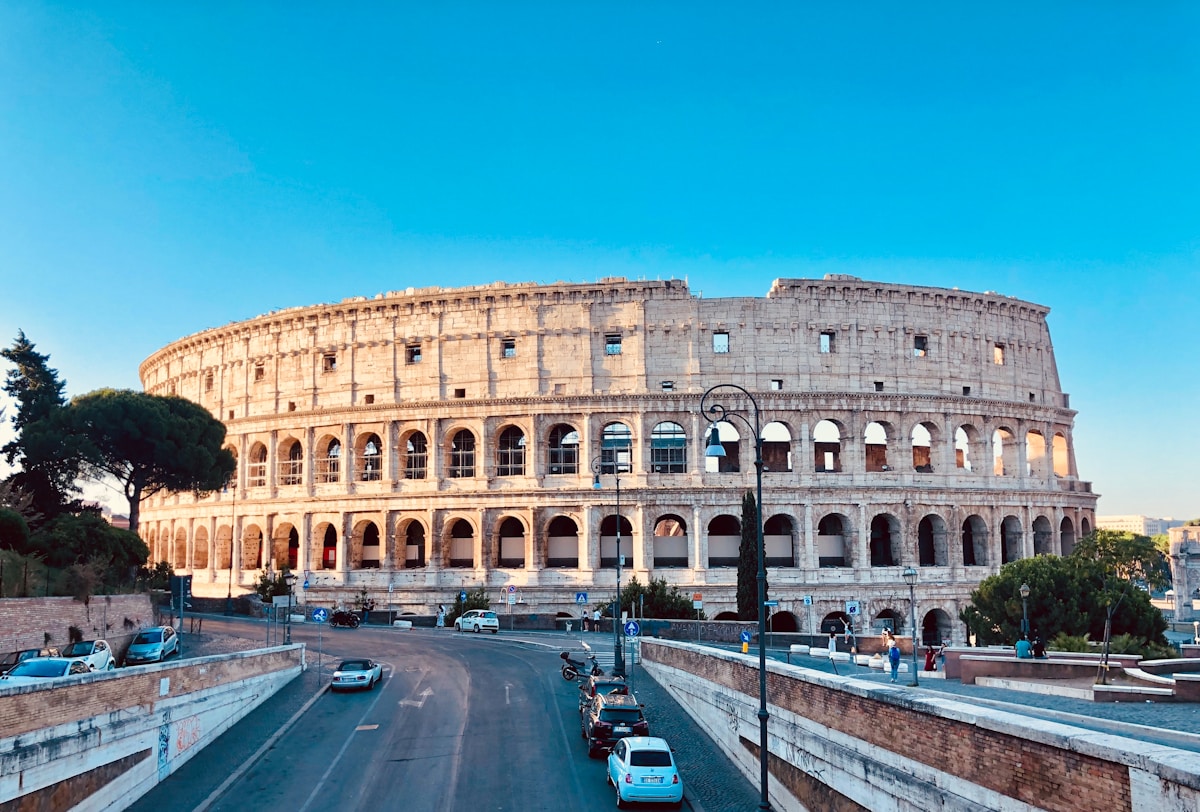
Rome’s extensive public transportation network combines with its inherently walkable nature to create multiple options for exploring the city.
Visitors can efficiently navigate Rome using a mix of Metro lines, city buses, and trams, which connect major attractions and neighborhoods throughout the historic center and outlying areas.
The city’s compact historic center, with its charming cobblestone streets and interconnected piazzas, makes walking an attractive and practical choice for experiencing many of Rome’s most famous sites within close proximity to each other.
How to Get Around Rome Efficiently and Comfortably
Maneuvering Rome’s diverse transportation options requires careful consideration of your planned itinerary and travel preferences.
The city offers an extensive public transit network, including buses, trams, and metros, which can efficiently connect visitors to major attractions and neighborhoods at budget-friendly rates.
For travelers seeking more flexibility, alternatives like taxis, rideshares, rental bikes, and walking routes each present distinct advantages depending on factors such as distance, time constraints, and desired level of independence.
Choosing the Best Way to Travel Around Rome Based on Your Itinerary

Planning efficient transportation in the Eternal City depends largely on where travelers need to go and what they plan to see.
The best way to get around Rome varies by destination – walking works well for central attractions, while buses and metro connect outlying areas.
Rome transportation options can be mixed and matched: metro for longer distances, walking for nearby sites, and taxis for late nights.
Comparing Rome Public Transportation and Other Travel Options
Understanding the various transportation options in Rome requires comparing the city’s extensive public transit network with alternatives like taxis, bike rentals, and private tours.
Local transport in Rome includes efficient metro lines, buses, and trams that connect major attractions. While Rome public transportation offers affordability, some travelers prefer the flexibility of walking or booking guided tours to explore hidden gems without relying on schedules.
Is Rome Walkable? Exploring the City on Foot
Rome’s historic center offers tourists an exceptionally walkable experience, with most major attractions clustered within a 20-30 minute walking radius of each other.
The area between the Spanish Steps, Trevi Fountain, and Pantheon forms a particularly pedestrian-friendly triangle where visitors can efficiently explore multiple landmarks without needing public transportation.
Ancient cobblestone streets and narrow alleys throughout the Centro Storico and Trastevere neighborhoods create an intimate atmosphere perfect for discovering hidden piazzas, local restaurants, and architectural gems at a leisurely pace.
How Walkable Is Rome for Tourists?
When it comes to exploring the Eternal City, walking is not just possible – it’s often the best way to experience Rome’s historic center.
Getting around Rome without a car is remarkably convenient, with most major attractions within walking distance.
- The historic center is compact, with most sites within 20-30 minutes of each other.
- Ancient streets and piazzas are designed for pedestrians.
- Walking allows tourists to discover hidden gems and authentic neighborhoods between major landmarks.
Best Areas to Explore Without Transportation
Several distinctive neighborhoods in Rome’s historic center offer perfect conditions for walking tours, with concentrated clusters of attractions and charming streetscapes.
The best way to get around Rome Italy includes exploring areas like Trastevere’s winding lanes, the ancient paths surrounding the Colosseum, and the elegant streets connecting Piazza Navona to the Spanish Steps—all easily traversed on foot.
Using Rome Public Transportation for Easy Travel
Rome’s thorough public transportation network offers visitors several efficient ways to navigate the city, including the metro system, buses, and trams.
The Metro’s three lines connect major attractions and neighborhoods through a fast, affordable underground network that serves as the backbone of city transit.
While the Metro covers key areas, Rome’s extensive bus system fills transportation gaps by reaching countless destinations across the ancient city’s winding streets and hidden corners.
Rome Public Transport: Overview of Available Options
Rome’s integrated public transportation network consists of metros, buses, trams, and urban railways that efficiently connect all major areas of the Eternal City.
Visitors can purchase single-journey tickets or opt for cost-effective travel passes like the Roma Pass, which combines unlimited public transport access with Rome museums entries.
Understanding the ticketing system and transport options helps travelers navigate Rome’s extensive network while avoiding common tourist pitfalls such as boarding without validated tickets or missing the last metro.
Understanding Local Transport in Rome for Visitors
Maneuvering through the Eternal City becomes considerably easier when visitors understand the extensive public transportation system available to them.
Rome’s integrated network offers several practical options:
- The Roma Pass travel card for Rome grants unlimited access to public transport while including museum entries.
- Bus routes in Rome cover extensive areas unreachable by metro.
- The underground metro system connects major tourist attractions efficiently.
Travel Card for Rome: Passes and Ticketing Options
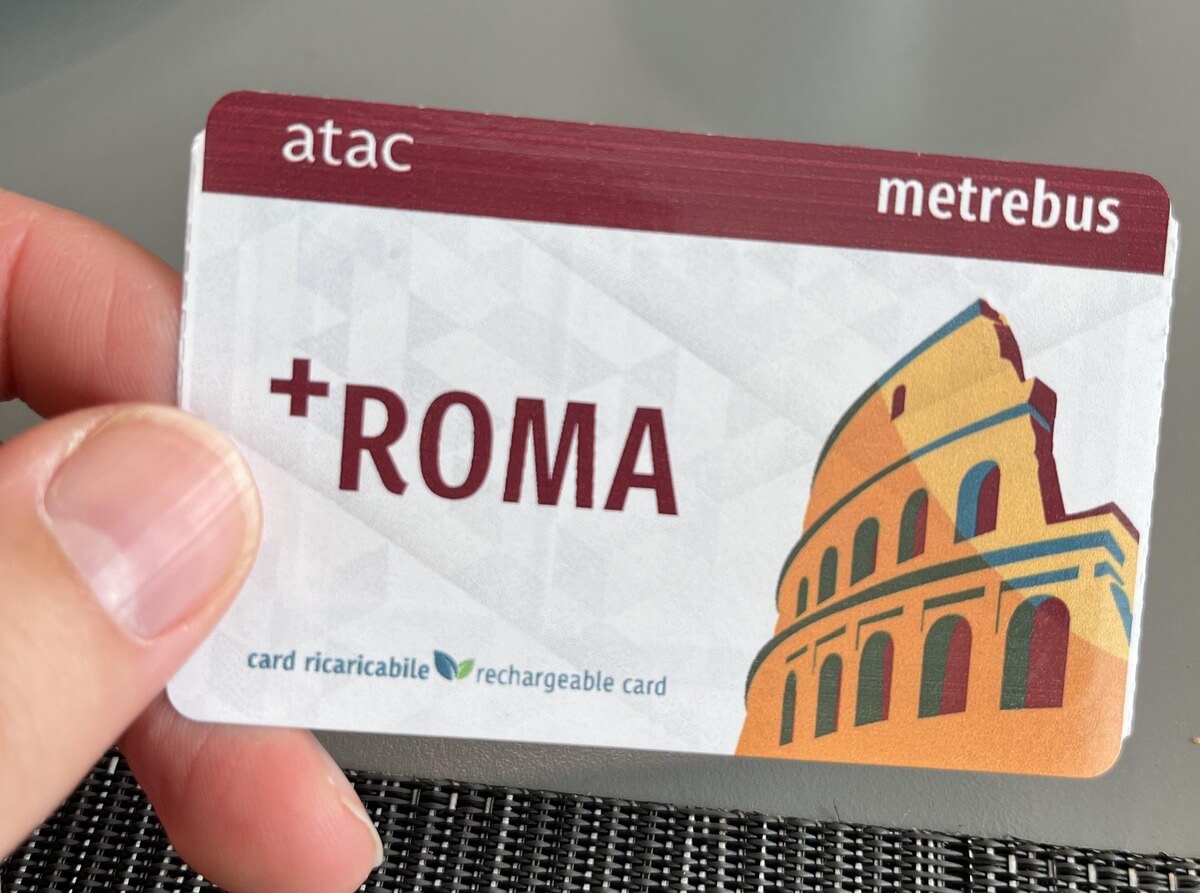
When planning a visit to the Eternal City, understanding the various travel card options can greatly reduce transportation costs and hassles.
The best way to travel in Rome includes utilizing passes like the Roma Pass or standard ATAC tickets, which cover public transport in Rome’s bus, metro, and tram networks.
Single-journey tickets, 24/72-hour passes, and weekly options accommodate different travel needs.
Rome Metro System: Fast and Affordable Travel
Rome’s metro system consists of three main lines – A (orange), B (blue), and C (green) – that efficiently connect major tourist attractions and neighborhoods throughout the city.
Line A serves popular sites like the Vatican, Spanish Steps, and Trevi Fountain, while Line B links the Colosseum and Circus Maximus to other key destinations.
Travelers can navigate the metro system easily by purchasing single-journey tickets or tourist passes at station vending machines, with trains running frequently from 5:30 AM until 11:30 PM daily.
Metro Lines and Key Stations for Sightseeing
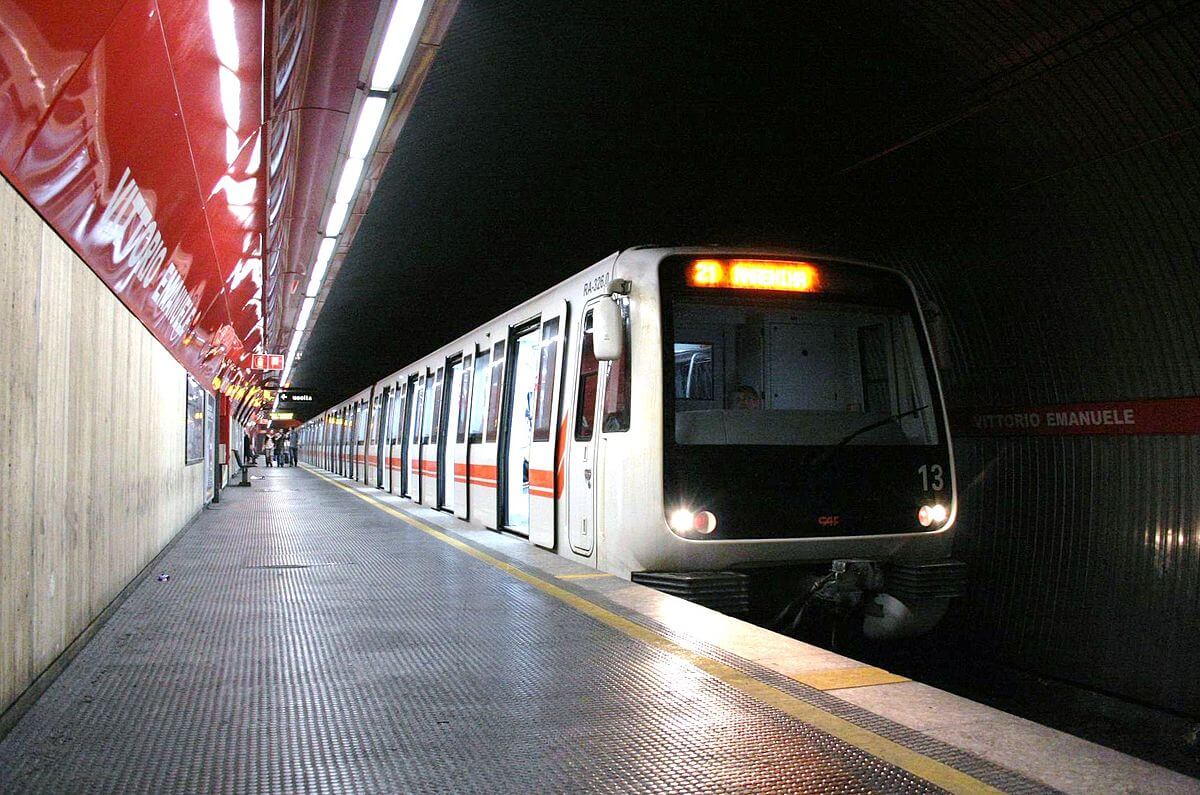
Maneuvering through Rome’s ancient streets becomes considerably easier with the city’s Metro system, which consists of three main lines: A (orange), B (blue), and C (green).
When exploring the best ways to get around Rome, key metro stations serve major attractions:
- Ottaviano station (Line A) – Vatican Museums and St. Peter’s Basilica
- Colosseo station (Line B) – Colosseum and Roman Forum
- Spagna station (Line A) – Spanish Steps and high-end shopping district
How to Get Around Rome Using the Metro Efficiently
The Metro system serves as Rome’s most efficient public transportation option, offering visitors and locals a fast and cost-effective way to navigate the city.
Travelers can purchase single-journey tickets or multi-day passes from automated machines or tobacco shops.
The Metro runs from 5:30 AM until 11:30 PM, with trains arriving every 3-10 minutes during peak hours.
Buses in Rome: Reaching More Destinations
Rome’s extensive bus network complements the metro system by reaching numerous attractions and neighborhoods that underground trains don’t service.
Tourists can easily navigate the bus system by using route-planning apps like Moovit or Rome’s official ATAC app, which provide real-time arrival information and step-by-step directions.
Popular tourist routes include bus 64, which connects Termini Station to Vatican City while passing major landmarks, and bus 40, an express line linking the Colosseum area to St. Peter’s Square.
How to Take the Bus in Rome Without Confusion
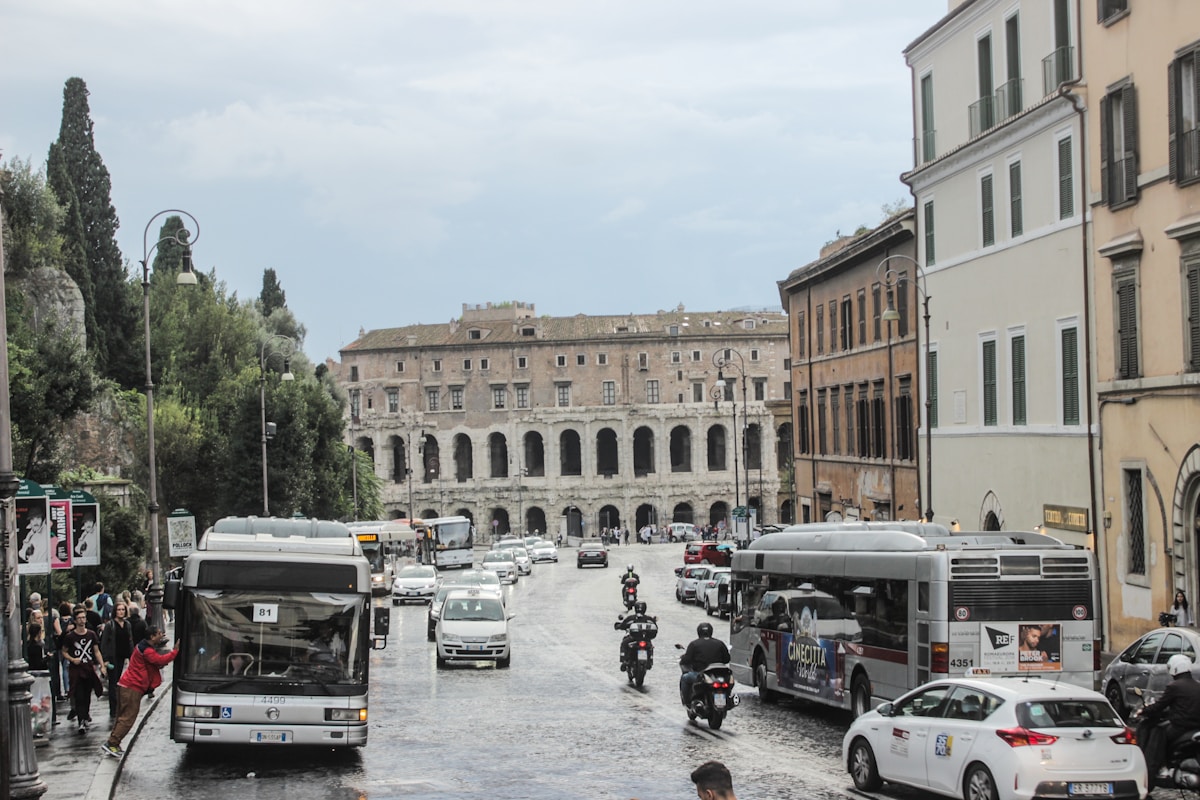
While metro lines serve Rome’s central areas efficiently, buses remain the most extensive public transit option for exploring the Eternal City’s countless destinations.
To navigate Rome’s bus system seamlessly:
- Purchase tickets at tabacchi shops or metro stations before boarding
- Validate tickets immediately upon entering the bus
- Track routes using the ATAC mobile app, which displays real-time bus locations and arrival times
Bus Routes in Rome That Are Useful for Tourists
Several essential bus routes connect Rome’s most popular tourist attractions, making them invaluable for visitors wanting to explore beyond the metro system’s reach.
Bus 64 links Termini Station to Vatican City, stopping at major sites like Piazza Venezia.
Bus 40 Express serves a similar route with fewer stops, while Bus 51 connects the Colosseum to Villa Borghese and other northern attractions.
Trams and Trolleys: Alternative Ways to Travel Around Rome
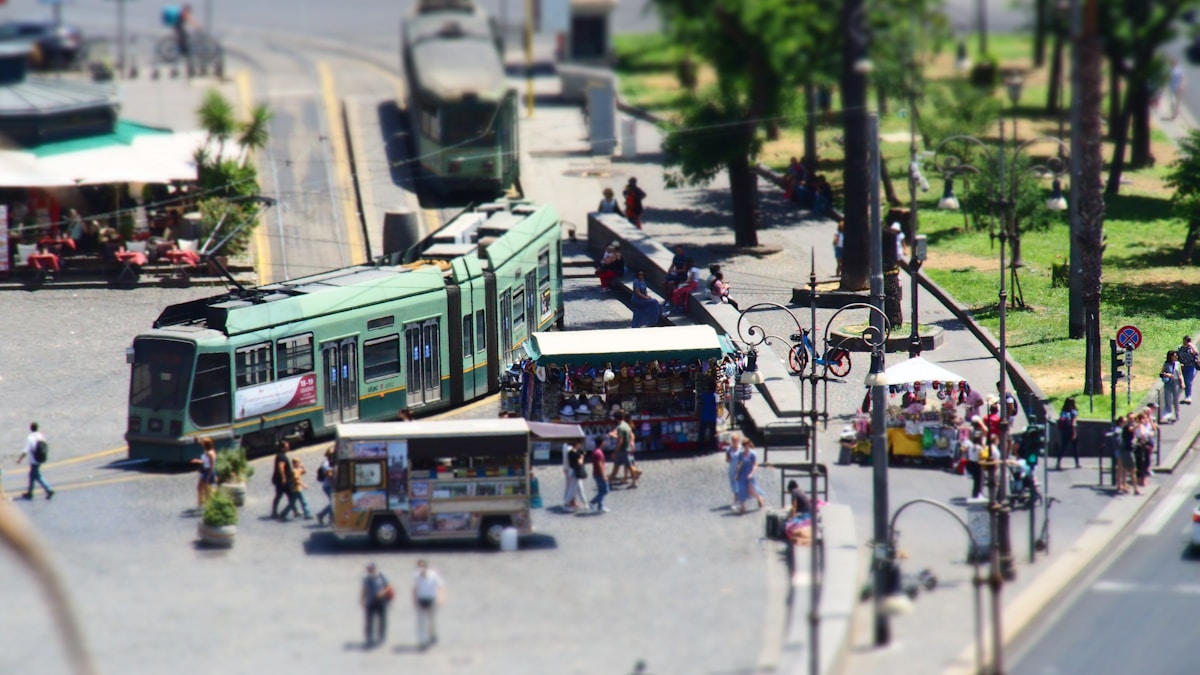
Rome’s extensive tram system provides an efficient alternative to buses and metros, with six main lines connecting residential areas to the city center.
The modern and historic trams run frequently from early morning until midnight, offering tourists a scenic way to reach attractions like the Colosseum and Villa Borghese.
For travelers seeking to avoid driving in Rome’s chaotic traffic, the well-maintained trolley and light rail network presents an economical and stress-free transportation option that seamlessly integrates with other public transit services.
Rome Tram System: Where It Runs and How to Use It
Rome’s historic tram system offers tourists efficient transportation to several key attractions while avoiding the city’s notorious traffic congestion.
The number 3 tram line proves especially valuable for visitors, connecting major sites like the Colosseum, Basilica of San Giovanni, and the trendy Trastevere neighborhood.
For art enthusiasts, the number 19 tram provides direct access to the Villa Borghese Gallery and the National Gallery of Modern Art, making it an essential route for museum hopping.
When Trams Are the Best Way to Get Around in Rome
While buses and metros serve as popular transit options in Rome, the city’s extensive tram network offers unique advantages for specific routes and destinations.
- Trams prove ideal when traveling to charming neighborhoods like Testaccio and Trastevere, where narrow streets limit other transit options.
- During rush hour, trams bypass traffic congestion on dedicated tracks.
- For scenic sightseeing between major attractions, tram routes offer picturesque views.
Key Tram Lines for Tourists and Popular Attractions
Several key tram lines connect Rome’s most popular tourist attractions, making them an efficient and scenic transportation option for visitors.
Line 3 runs to the Colosseum and Circus Maximus, while Line 8 serves Trastevere’s charming streets.
Line 19 takes travelers to the Vatican Museums and St. Peter’s Basilica, and Line 2 connects to Villa Borghese.
How to Get Around Rome Without a Car Using Trolleys and Light Rail
Visitors to Rome can maximize their travel efficiency by strategically combining tram and metro services throughout their journey.
The tram system effectively complements Rome’s Metro lines by reaching areas where underground trains don’t operate, particularly in neighborhoods like Trastevere and Testaccio.
Travelers can purchase integrated tickets that work across both systems, making it convenient to switch between trams and metro trains while exploring the city’s major attractions and hidden gems.
Combining Trams and Metro for Efficient Travel
When planning efficient travel through Rome, combining the city’s tram and metro systems offers tourists a thorough transportation solution that maximizes coverage of major attractions.
- Purchase an integrated transit pass that works on both systems to freely move between them.
- Use metro lines A and B for major sites, then connect to trams for less touristy areas.
- Download Rome’s official transit app to track real-time arrival times.
Taking Taxis and Ride-Sharing Services in Rome
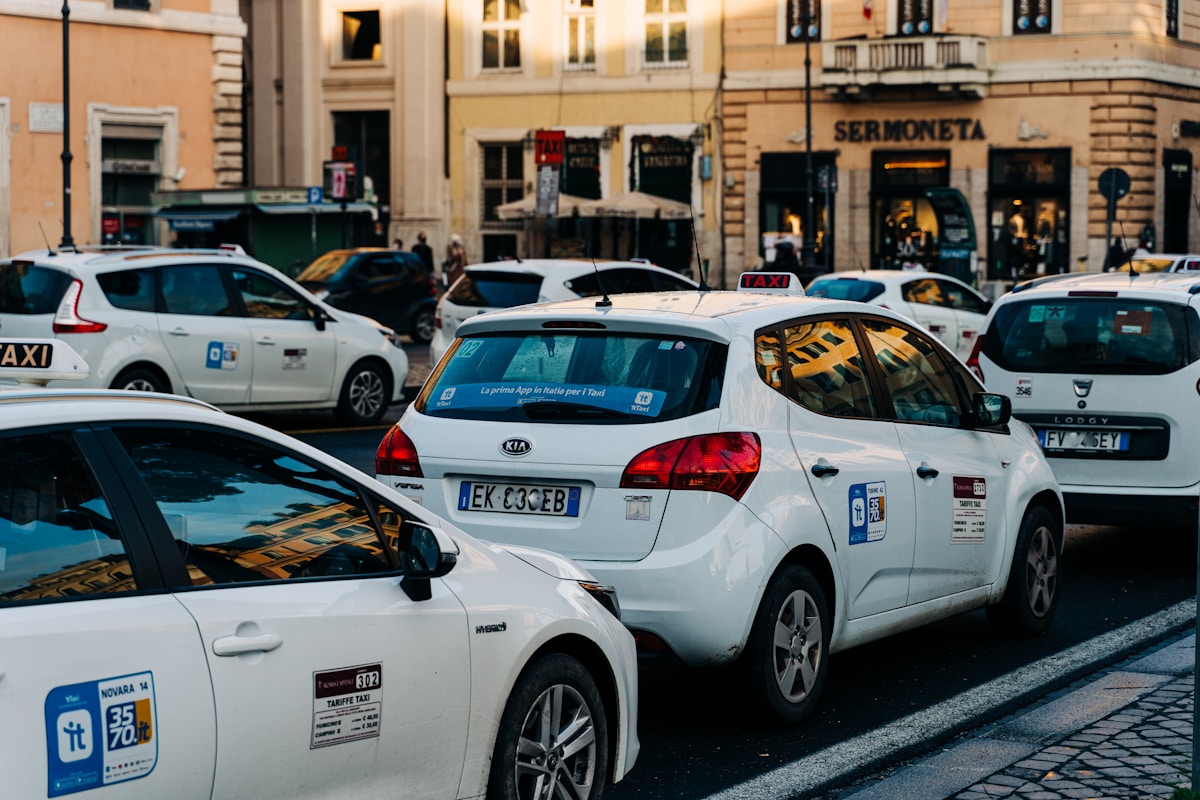
Taxis and rideshare services provide convenient transportation options for visitors looking to navigate Rome’s bustling streets without relying on public transit.
Popular ride-hailing apps like FREE NOW, itTaxi, and Uber operate throughout the city, offering reliable alternatives to traditional taxis with upfront pricing and GPS tracking.
While conventional taxis can be found at designated stands or hailed on the street, many travelers prefer using mobile apps to avoid language barriers and guarantee transparent fares during their Roman adventures.
Rome Transportation Options for Quick and Private Travel
Tourists in Rome can easily find licensed taxis at designated taxi stands throughout the city or by using reliable ride-hailing apps like FreeNow and IT Taxi.
To avoid being overcharged, travelers should only use white or yellow licensed taxis with a “TAXI” sign on top and verify the meter is running at the start of their journey.
Official taxi stands are conveniently located near major attractions, train stations, and popular piazzas, making it simple to grab a legitimate cab while avoiding unlicensed drivers who might approach tourists with inflated rates.
How to Find a Taxi and Avoid Overpaying
Getting around Rome by taxi can be both convenient and frustrating without knowing the proper protocols and potential pitfalls.
To guarantee a smooth experience and fair rates:
- Only use white, licensed taxis with “TAXI” signs and Rome’s municipal shield.
- Insist on using the meter or confirm fixed rates before departure.
- Look for official taxi stands near major attractions rather than hailing on streets.
Apps and Official Taxi Stands for Safe Travel
Finding transportation options in Rome has become considerably easier with the advent of reliable taxi-booking apps and a network of well-marked official taxi stands.
Travelers can download apps like FREE NOW (formerly MyTaxi) or iTaxi to hail licensed cabs directly from their smartphones.
Additionally, white-marked taxi stands, located near major attractions and transit hubs, provide safe pickup points where only authorized taxis can queue.
Ride-Sharing Apps for Getting Around Rome Without a Car
While traditional taxis in Rome typically cost more than ride-sharing services like Uber or FREE NOW, the convenience and reliability of these apps make them an attractive option for tourists traversing the city.
Ride-sharing proves especially valuable for travelers heading to or from airports, reaching destinations outside the city center, or moving around late at night when public transit is limited.
The transparent pricing, GPS tracking, and ability to communicate through the app rather than struggle with language barriers make ride-sharing services particularly appealing for international visitors exploring Rome’s historic streets.
Comparing Costs and Convenience of Ride-Sharing vs. Taxis
Should travelers rely on traditional taxis or embrace ride-sharing services when exploring Rome? Both options offer distinct advantages, but ride-sharing typically proves more cost-effective and convenient.
- Ride-sharing services cost 20-30% less than traditional taxis and offer upfront pricing.
- Taxis provide dedicated taxi stands and street hailing convenience.
- Ride-sharing apps offer English interfaces and cashless payment options, eliminating language barriers.
When Ride-Sharing Is the Best Option for Tourists
When do tourists benefit most from using ride-sharing services in Rome?
These services prove invaluable during late-night returns from restaurants or clubs, especially in areas with limited public transportation.
They’re also ideal when traveling with heavy luggage to and from airports, visiting distant attractions like the catacombs, or during unexpected weather.
Groups of 3-4 travelers often find ride-sharing more economical than multiple bus tickets.
Biking and Scooters: Exploring Rome on Two Wheels
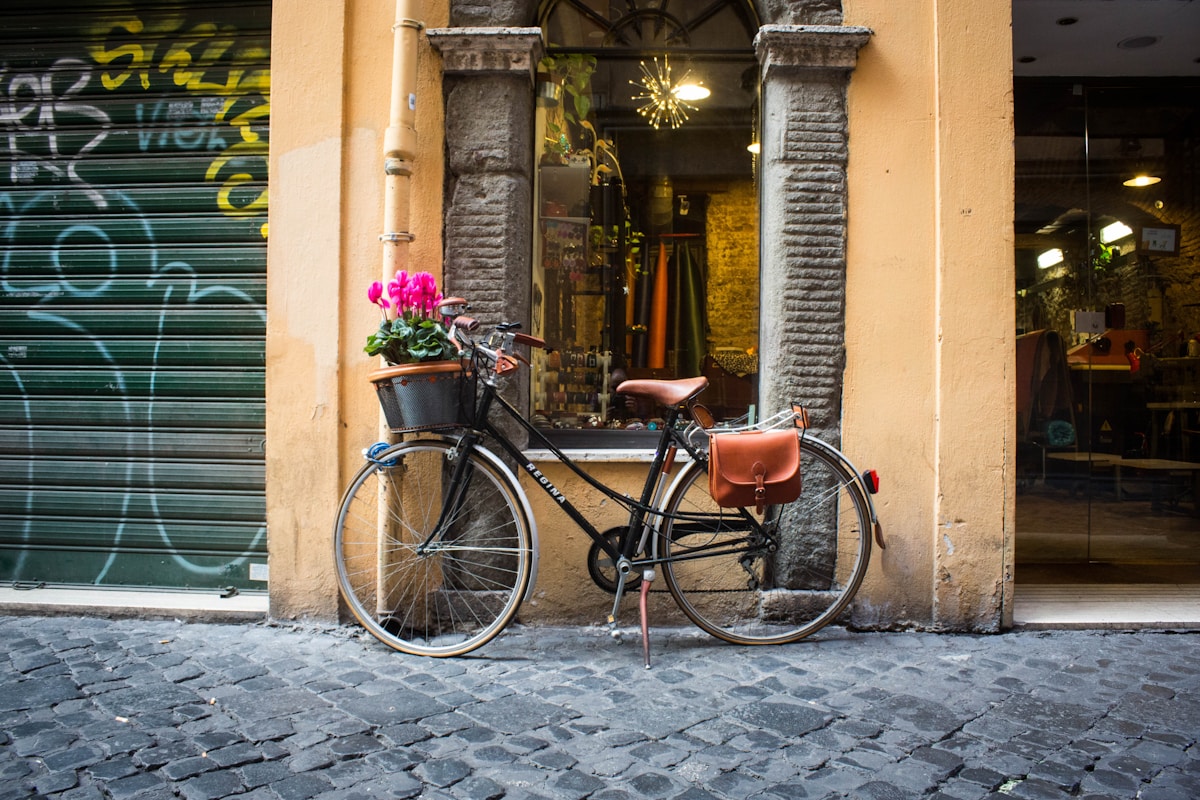
For adventurous travelers, Rome offers several bike and electric scooter sharing services that provide an active way to explore the city’s historic streets and hidden corners.
Companies like Lime, Bird, and Jump operate throughout Rome’s central districts, allowing visitors to easily locate and access vehicles through smartphone apps.
While Rome’s cobblestone streets and seven hills can make cycling challenging in some areas, dedicated bike lanes and car-restricted zones in places like Villa Borghese and along the Tiber River offer safer routes for two-wheeled transportation.
Best Ways to Get Around Rome for an Active Experience
Renting bikes and e-scooters from numerous vendors across Rome offers visitors a flexible way to navigate shorter distances between attractions while enjoying an active experience.
The safest cycling routes include the Appian Way and Villa Borghese gardens, where riders can avoid heavy traffic while taking in historical sites and green spaces.
However, cyclists should steer clear of congested areas like the Spanish Steps, Trastevere’s narrow streets during peak hours, and major thoroughfares such as Via del Corso, where dense traffic and cobblestones can pose safety risks.
Renting Bikes and E-Scooters for Short-Distance Travel
To experience Rome’s enchanting streets and hidden corners up close, bikes and e-scooters offer visitors an eco-friendly and efficient way to navigate the city’s historic center.
Several rental options make exploring on two wheels simple:
- Bike-sharing apps like BiciLive and RideMovi offer convenient pick-up points across Rome.
- E-scooter services Bird and Lime provide easy mobile booking.
- Local bike shops rent quality equipment for full-day adventures.
Where to Ride Safely and Which Areas to Avoid
While Rome’s ancient streets offer countless opportunities for cycling and scooting adventures, riders must carefully choose their routes to guarantee a safe and enjoyable experience.
The quieter streets of Trastevere and Villa Borghese gardens (also read our recommendations of the best gardens in Rome) provide ideal conditions for two-wheeled exploration.
However, avoid busy thoroughfares like Via del Corso and the chaotic traffic around Termini Station and the Colosseum area.
How to Travel Around Rome Using Shared Bike and Scooter Services
Renting shared bikes and e-scooters in Rome requires downloading operator-specific apps like Lime, Bird, or Dott and locating available vehicles through the digital map interface.
Users must follow Rome’s traffic rules, wear helmets when required, and park vehicles only in designated zones to avoid fines and maintain proper etiquette.
These services operate on a pay-per-minute basis, with access fees typically ranging from 1-2 euros and per-minute rates of 0.15-0.25 euros, making them an economical option for short trips around the city.
How to Rent and Return E-Scooters and Bikes in Rome
Getting around Rome on shared e-scooters and bikes offers visitors a convenient and eco-friendly transportation option that combines flexibility with affordability.
To rent and return these vehicles:
- Download apps like Lime, Bird, or Dott and complete the registration process with payment details.
- Scan the QR code on the vehicle to open it and begin your journey.
- Park in designated areas marked on the app’s map when finished.
Rules and Etiquette for Riding in the City
To safely navigate Rome’s bustling streets on e-scooters and bikes, visitors must understand and follow the city’s specific rules and etiquette guidelines.
Riders should stay in bike lanes when available, yield to pedestrians, and avoid sidewalks.
Italian law requires helmets for minors, prohibits tandem riding, and restricts speeds to 25 km/h.
Additionally, riders must park vehicles in designated zones.
Rome’s Hop-On Hop-Off Buses: Tourist-Friendly Transportation
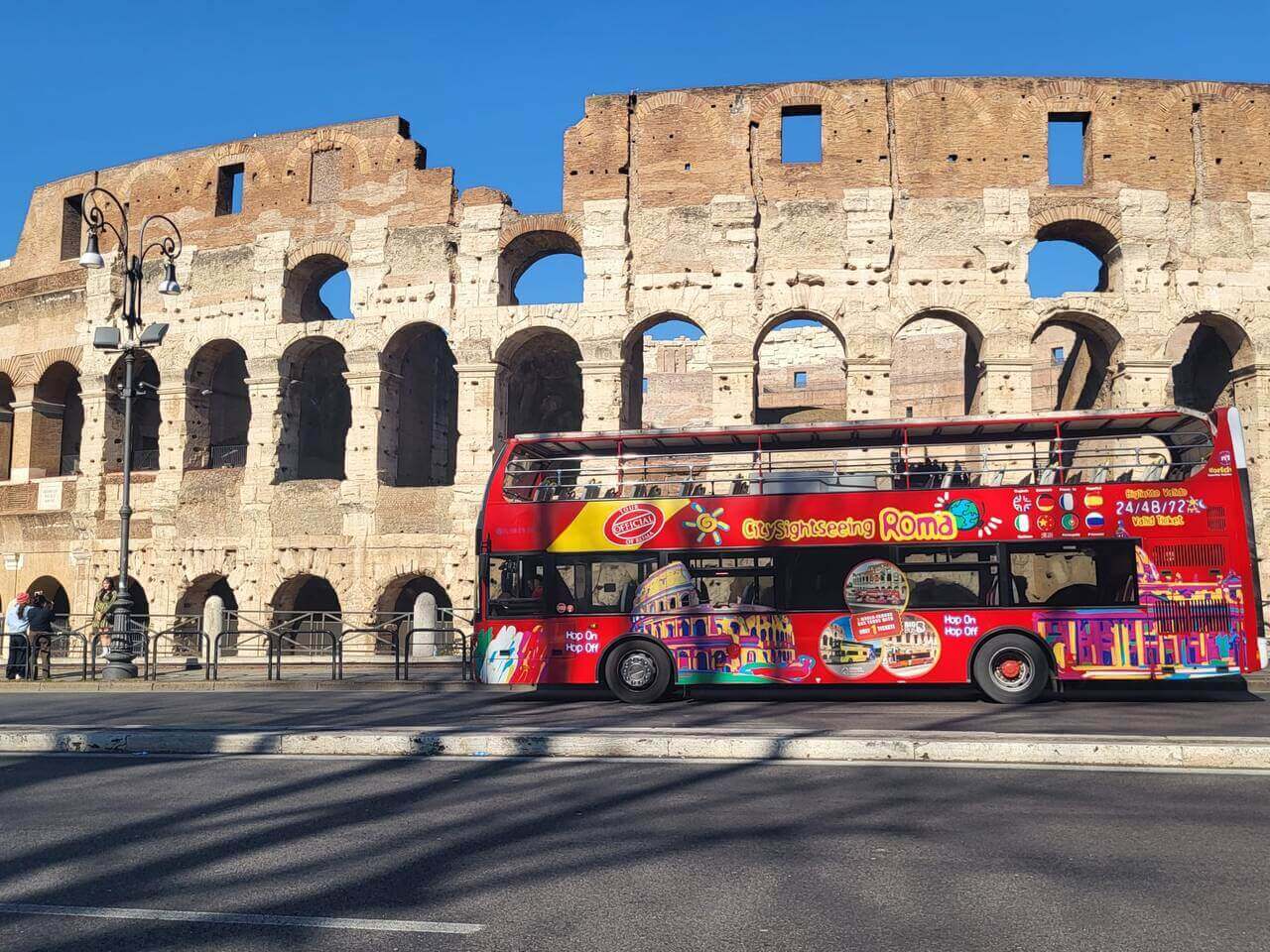
Rome’s hop-on hop-off buses provide tourists with a convenient way to navigate between the city’s major attractions while offering informative audio commentary in multiple languages.
These double-decker buses follow predetermined routes with strategic stops at landmarks like the Colosseum, Vatican City, and Trevi Fountain, allowing passengers to explore at their own pace.
Visitors can purchase tickets valid for 24, 48, or 72 hours, making these buses an efficient and cost-effective option for sightseeing in the Eternal City.
How to Travel in Rome Using Hop-On Hop-Off Buses
Rome’s hop-on hop-off bus services offer tourists a convenient way to explore major attractions while avoiding the complexities of public transportation and walking long distances.
These tourist-focused buses operate multiple routes throughout the city, with companies like Big Bus Roma, City Sightseeing, and I Love Rome providing varying levels of service, audio guides in multiple languages, and Wi-Fi connectivity.
Visitors can compare different companies’ offerings based on route coverage, frequency of buses, ticket validity periods, and additional perks such as guided walking tours or museum pass bundles.
Benefits of Using Tourist Buses for Sightseeing
When exploring the ancient city of Rome, tourist buses offer one of the most convenient and all-encompassing ways to experience major attractions while avoiding the hassle of maneuvering public transportation or walking long distances.
Key benefits include:
- Panoramic views from elevated seating
- Audio guides in multiple languages providing historical context
- Freedom to customize your itinerary with flexible hop-on hop-off options
Comparing Hop-On Hop-Off Services and Routes
Several hop-on hop-off bus companies operate throughout Rome, each offering distinct routes, schedules, and pricing options for tourists seeking thorough city tours.
Major operators like Big Bus Roma, CitySightseeing, and I Love Rome cover key attractions including the Colosseum, Vatican City, and Trevi Fountain.
Tickets typically range from 24 to 72 hours, with audio guides available in multiple languages.
Taking Trains for Day Trips and Regional Travel
Rome’s extensive rail network, operated by Trenitalia and Italo, connects travelers to destinations throughout Italy and enables convenient day trips from the capital.
These modern train services depart from Roma Termini and Roma Tiburtina stations, offering high-speed connections to Florence, Naples, Venice, and other major cities.
Regional trains also provide access to charming towns in Lazio and neighboring regions, making it easy for visitors to explore beyond Rome’s city limits.
Rome Italy Transportation Beyond the City Center
Rome’s central train stations offer convenient access to popular day trip destinations, with Termini Station serving as the main hub for reaching Florence in 1.5 hours and Naples in just over an hour.
From Naples, travelers can easily connect to the ruins of Pompeii via the Circumvesuviana local train, making it possible to explore multiple historic sites in a single day.
While Termini handles most regional and high-speed rail services, Tiburtina Station serves as an alternative departure point for international trains and connections to cities in northern Italy.
Using Trains for Day Trips to Florence, Naples, and Pompeii
Exploring Italy’s treasures beyond Rome becomes seamless with the country’s extensive rail network. High-speed trains connect major destinations with frequent daily service and comfortable amenities.
- Florence: 1.5 hours via Trenitalia or Italo trains
- Naples: Just over 1 hour on high-speed service
- Pompeii: Take train to Naples, then local Circumvesuviana line to ancient ruins
Best Train Stations in Rome for Regional and International Travel
When starting on train journeys from Italy’s capital, travelers rely on several key railway stations that serve as gateways to regional and international destinations.
Roma Termini, the city’s main hub, connects to major Italian cities and European routes.
Roma Tiburtina handles regional trains to Florence and Bologna, while Roma Ostiense provides direct access to Fiumicino Airport and coastal towns.
How to Get Around Rome Italy with Trenitalia and Italo Trains
Italy’s two main rail services, Trenitalia and Italo, offer distinct options for travelers exploring beyond Rome.
Trenitalia provides both high-speed and regional services while Italo focuses exclusively on high-speed routes. Passengers can easily book tickets through user-friendly websites or mobile apps, with prices varying considerably between the faster Frecciarossa trains that reach speeds of 300 km/h and the slower, more economical regional services.
Train schedules are clearly displayed at stations and online, showing departure times, platform numbers, and expected journey durations.
Though travelers should note that regional trains often require validation of tickets before boarding while high-speed tickets do not.
Booking Tickets and Understanding Train Schedules
Train travel offers one of the most efficient and cost-effective ways to explore Rome and its surrounding regions.
Travelers can easily secure their tickets through various convenient methods.
- Book tickets online through Trenitalia or Italo’s official websites up to 4 months in advance.
- Purchase from automated kiosks at stations using credit cards.
- Visit station ticket offices for direct transactions and schedule clarifications.
Differences Between High-Speed and Regional Trains
Understanding the key differences between Italy’s train services can greatly enhance a traveler’s experience in Rome and beyond.
High-speed trains (Frecciarossa, Italo) offer premium comfort, reaching speeds of 300 km/h with fewer stops, while regional trains serve local routes at lower speeds with multiple stops.
High-speed options cost more but save time, whereas regional trains provide budget-friendly alternatives for exploring nearby towns.
Boats and Ferries: Traveling on the Tiber River
The Tiber River offers visitors a unique vantage point for experiencing Rome’s ancient landmarks and architectural treasures.
River cruises along the Tiber provide sweeping views of iconic sites like St. Peter’s Basilica, Castel Sant’Angelo, and the Trastevere district without the usual crowds of land-based sightseeing.
Travelers can choose from various boat services, including dinner cruises, hop-on-hop-off water buses, and guided historical tours that reveal Rome’s deep connection to its historic waterway.
Travel Around Rome with a Different Perspective
The Tiber River offers visitors a unique vantage point to experience Rome’s historic landscapes through scenic river cruises and water transport services.
Boat tours along the Tiber provide opportunities to view ancient bridges, riverside architecture, and notable landmarks while avoiding the city’s crowded streets and intense traffic.
While not as extensive as Venice’s water transportation system, Rome’s river services become particularly appealing during summer months when tourists can escape the heat while traveling between major attractions near the riverbanks.
River Cruises and Water Transport for Sightseeing
River cruises along the Tiber offer visitors a unique vantage point to experience Rome’s historic landmarks and architectural wonders from the water.
The Tiber River provides numerous sightseeing options:
- Hop-on-hop-off boat services connect major attractions like Vatican City and Trastevere.
- Evening dinner cruises showcase Rome’s illuminated bridges and monuments.
- Small water taxis offer flexible, customized routes for exploring hidden waterfront gems.
When Boat Travel Is a Convenient Option in Rome
While traditional land-based transportation dominates Rome’s tourist routes, boat travel along the Tiber becomes particularly advantageous during specific scenarios and seasons.
Summer months offer relief from crowded streets and intense heat, while evening river cruises provide stunning views of illuminated monuments.
Boat services also prove convenient when attending riverside festivals or accessing attractions near the riverbanks like Trastevere and Vatican City.
Cheapest Way to Get to Rome and Around the City
Budget-conscious travelers can reach Rome’s city center from Fiumicino Airport via the affordable FL1 regional train or take the even cheaper Terravision bus service from Ciampino Airport.
Within Rome itself, the most economical transportation option is the extensive public transit system, which includes buses, trams, and metro lines all accessible with a single ticket or multi-day pass.
Walking remains completely free and often proves the best way to experience Rome’s historic center, where many major attractions sit within reasonable distances of each other.
How to Travel Around Rome on a Budget
Rome’s extensive public transportation system offers budget-conscious travelers an economical way to explore the Eternal City, with buses, trams, and the metro connecting all major attractions and neighborhoods.
Visitors can purchase single tickets for €1.50, but investing in travel cards like the 24-hour (€7), 48-hour (€12.50), or 72-hour (€18) passes provides unlimited access to all public transport options.
These passes, available at metro stations, tobacco shops, and newsstands throughout Rome, allow travelers to hop between attractions without worrying about purchasing individual tickets.
Using Public Transportation in Rome to Save Money
Getting around Rome affordably requires understanding the city’s extensive public transportation network, which includes buses, trams, and a metro system.
For budget-conscious travelers, Rome offers several cost-effective transit options:
- Purchase multi-day transit passes for unlimited rides across all public transport.
- Use the metro system to quickly reach major tourist attractions.
- Take advantage of night buses when metro service ends.
Best Travel Cards for Unlimited Public Transport Use
When planning extended stays in Rome, visitors can maximize their savings with strategic travel card options that grant unlimited access to the city’s public transportation network.
The Roma Pass offers 48- or 72-hour unlimited rides, while the CIS weekly ticket provides seven days of unlimited travel.
Both cards work on buses, trams, and metro lines throughout Rome’s extensive public transit system.
Cheapest Way to Get to Rome from Airports and Train Stations
Rome’s two main airports and various train stations offer multiple transportation options into the city center, with costs varying considerably between choices.
From Fiumicino Airport, travelers can take the Leonardo Express train directly to Roma Termini for €14, while the more economical but slower SIT bus service costs around €6.
Those arriving at Ciampino Airport or the city’s train stations can opt for budget-friendly public buses or slightly pricier but more convenient taxi services, which operate on fixed rates to central Rome.
Airport Transfers: Train, Bus, or Taxi Options
Travelers arriving at Rome’s airports have several transportation options to reach the city center, ranging from budget-friendly buses to convenient express trains and taxis.
- The Leonardo Express train runs from Fiumicino Airport to Termini Station every 30 minutes.
- SIT Bus Shuttle and Terravision offer regular services from both airports at competitive rates.
- Licensed white taxis operate on fixed rates: €48 from Fiumicino and €30 from Ciampino.
Budget-Friendly Routes for Arriving in the City
Several budget-conscious transportation options make reaching Rome’s city center both affordable and straightforward.
The Leonardo Express train from Fiumicino Airport costs €14, while the SIT bus service charges only €6.
From Ciampino Airport, travelers can take the €1.50 local COTRAL bus to Anagnina metro station, then connect to Rome’s subway system for an additional €1.50.
Tips for Getting Around Rome Without a Car
Traversing Rome’s ancient streets is most efficient by combining the Metro system with walking tours through the historic center, allowing visitors to bypass the notorious traffic congestion.
The Metro’s color-coded lines feature clear signage in both Italian and English, making it simple for non-Italian speakers to reach major attractions and neighborhoods.
Street signs and tourist information points throughout the city provide multilingual assistance, while mobile translation apps can help travelers communicate effectively with locals when needed.
Best Way to Get Around Rome Without Dealing with Traffic
Renting a car in Rome presents more challenges than benefits, with the city’s notorious traffic congestion, limited parking, and numerous restricted traffic zones that often result in hefty fines for unsuspecting tourists.
The city’s extensive public transportation system, including buses, trams, and the metro, offers convenient access to major attractions while eliminating parking hassles and navigation stress.
Walking through Rome’s historic center allows visitors to discover hidden gems, appreciate the city’s architectural details, and experience the authentic rhythm of Roman life at a leisurely pace.
Why Renting a Car in Rome Might Not Be the Best Option
The bustling streets of Rome can transform even the most confident drivers into anxious travelers, making car rentals an unnecessarily stressful choice for exploring the Eternal City.
- Narrow streets and limited parking make maneuvering through historic districts nearly impossible.
- ZTL zones (restricted traffic areas) result in hefty fines for unsuspecting tourists.
- Ancient road layouts and aggressive local driving habits create challenging conditions.
When Public Transport and Walking Are More Convenient
Fortunately, visitors can explore Rome’s magnificent attractions more efficiently by combining public transportation with walking tours, avoiding the hassles of driving entirely.
The metro system connects major landmarks, while buses cover extensive city routes.
Walking between nearby sites reveals hidden gems in the historic center, and pedestrian zones in areas like Trastevere and the Roman Forum offer uninterrupted exploration opportunities.
How to Get Around Rome Without Speaking Italian
While traversing Rome’s public transportation system might seem intimidating for non-Italian speakers, several modern tools and resources make it surprisingly manageable.
Popular translation apps like Google Translate and Rome’s official transit app ATAC Roma help visitors purchase tickets, check schedules, and find their way through the city’s extensive network of buses, trams, and metros.
Learning a few basic Italian phrases for directions and destinations, combined with clearly labeled ticket machines featuring multiple language options at major transportation hubs, guarantees travelers can confidently explore the Eternal City without language barriers.
Useful Phrases and Apps for Public Transport and Taxis
Maneuvering Rome’s public transportation system becomes considerably easier with a few essential Italian phrases and helpful mobile applications.
For seamless navigation through Rome’s transit network:
- Download apps like Moovit or Rome2Go for real-time bus and metro schedules.
- Learn “Dov’è la fermata?” (Where’s the stop?) and “Quanto costa?” (How much?)
- Use MyTaxi app for reliable, licensed taxi services without language barriers.
Navigating Ticket Machines and Transportation Hubs
Finding your way through Rome’s ticket machines and transportation hubs can seem intimidating at first, but modern technology has made the process increasingly user-friendly.
Most machines offer English language options and accept both cash and cards. Major hubs like Termini Station feature clear signage and digital displays showing real-time departure information, while touchscreen kiosks provide step-by-step purchasing guidance.
Choosing the Best Way to Get Around Rome Based on Your Plans
Selecting the best transportation method in Rome depends heavily on both a visitor’s planned activities and their chosen accommodation location within the city.
The historic center (Centro Storico), Trastevere, and Monti neighborhoods offer excellent walkability and proximity to major attractions like the Colosseum, Vatican, and Trevi Fountain.
Families with children might prefer combining Metro rides with walking, while solo travelers often benefit from Rome’s extensive bus network.
Couples might enjoy the flexibility of mixing walking tours with occasional taxi rides for evening activities.
Best Rome Neighborhoods for Walking and Easy Access to Attractions
The historic center of Rome offers several prime neighborhoods where visitors can minimize transportation hassles by staying within walking distance of major attractions.
The area around Piazza Navona and the Pantheon serves as an ideal central base, putting travelers within a 15-20 minute walk of the Vatican, Spanish Steps, and Colosseum.
Staying near the bustling Campo de’ Fiori or charming Trastevere districts also positions tourists perfectly for exploring Rome’s ancient sites, restaurants, and shopping areas on foot while experiencing authentic neighborhood character.
Where to Stay for a Walkable Rome Experience
When planning a stay in Rome, choosing the right neighborhood can make the difference between spending hours on public transit and enjoying leisurely walks to major attractions.
The most walkable neighborhoods for tourists include:
- Centro Storico – nestled between the Spanish Steps and Pantheon
- Monti – a charming district near the Colosseum
- Trastevere – a lively area across the Tiber with easy access to Vatican City
Best Place to Stay in Rome to Walk Everywhere
Finding the perfect home base in Rome requires careful consideration of both location and preferred travel style.
The Centro Storico district, particularly near Piazza Navona or the Pantheon, offers ideal walking access to major attractions.
The Monti neighborhood provides a strategic position between the Colosseum and Vatican City, while Trastevere combines authentic charm with reasonable walking distances to key sites.
Best Ways to Get Around Rome for Different Types of Travelers
Different types of travelers require distinct transportation strategies to navigate Rome effectively and comfortably.
Families with children often benefit from combining Metro rides with taxis to avoid exhaustion, while solo travelers and couples can take advantage of Rome’s extensive bus network and walking routes for maximum flexibility and cost savings.
For those exploring the nightlife in Rome and late-night dining scene, pre-arranged private drivers or ride-sharing services offer safe and reliable alternatives when public transportation becomes limited after midnight.
How Families, Solo Travelers, and Couples Can Travel Comfortably
Travelers exploring Rome can benefit from choosing transportation methods that match their specific group dynamics and itinerary needs.
- Families with children often find hop-on-hop-off buses ideal, offering flexibility and comfort while avoiding long walks.
- Solo travelers can maximize mobility with combined metro passes and bike-sharing services.
- Couples typically enjoy walking tours and occasional taxis for romantic evening outings.
Late-Night Transportation Options for Nightlife and Dining
When the sun sets and Rome’s lively nightlife emerges, visitors need reliable transportation options to safely navigate the city’s after-dark attractions.
Night buses (indicated by “N” before route numbers) run from midnight to 5 AM, while taxis and rideshare services operate 24/7.
For areas like Trastevere and Testaccio, where nightlife thrives, many locals and tourists rely on these late-night services.
Wrapping Up
To get around Rome, you need to plan carefully and be flexible.
The city offers various transportation options, including trams, boats, and metro lines. Each mode of transport provides a unique view of the city.
With the right information and options, visitors can explore Rome’s attractions with ease and confidence.
Frequently Asked Questions (FAQs)
What is the best way to get around Rome?
Getting around Rome is easy when you choose the right transportation. Walking is a great way to see Rome’s historic center, including famous landmarks like the Pantheon, Trevi Fountain, and Spanish Steps. You can walk at your own pace, save money, and enjoy the city’s vibrant streets.
For longer trips, the metro is a good option. Rome’s metro has three lines – A, B, and C. Line A goes to the Vatican and Line B goes to the Colosseum. The metro is fast, cheap, and reliable.
Hop-on hop-off buses are another way to see Rome’s main attractions without getting lost. These buses let you get on and off at popular sites like the Colosseum and Vatican City.
If you’re traveling late at night or have a lot of luggage, taxis and ride-sharing services like Uber are a good choice. Rome’s public transport system is easy to use, and you can use the same ticket on buses, trams, and metro lines, making it easy to get around without a car.
Are there Ubers in Rome?
Yes, Uber operates in Rome, but it’s not the same as in many other cities. The service is limited to premium options like Uber Black, Uber Lux, and Uber Van, which cater more to luxury travelers than budget-conscious tourists.
These services are more expensive than regular taxis, offering a high-end experience with professional drivers and luxury vehicles. They are ideal for special occasions, airport transfers, or when you prefer a more upscale ride.
Interestingly, Uber has also integrated with the local taxi service, itTaxi, allowing you to book and pay for regular taxis directly through the Uber app.
This means you can use Uber’s payment system to hail a traditional taxi, which can be more convenient than finding a taxi stand or dealing with cash payments.
However, for those on a tighter budget, traditional taxis or public transport might be more cost-effective options for getting around Rome.




